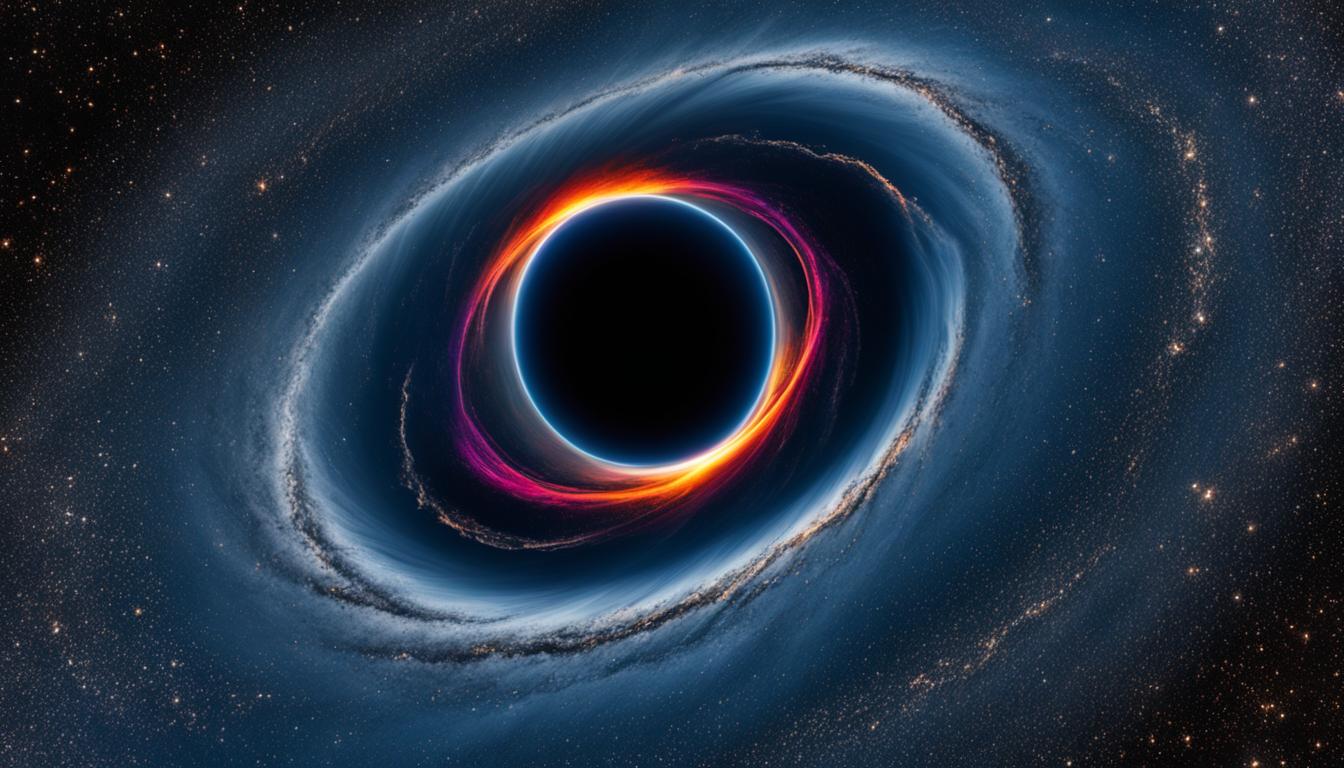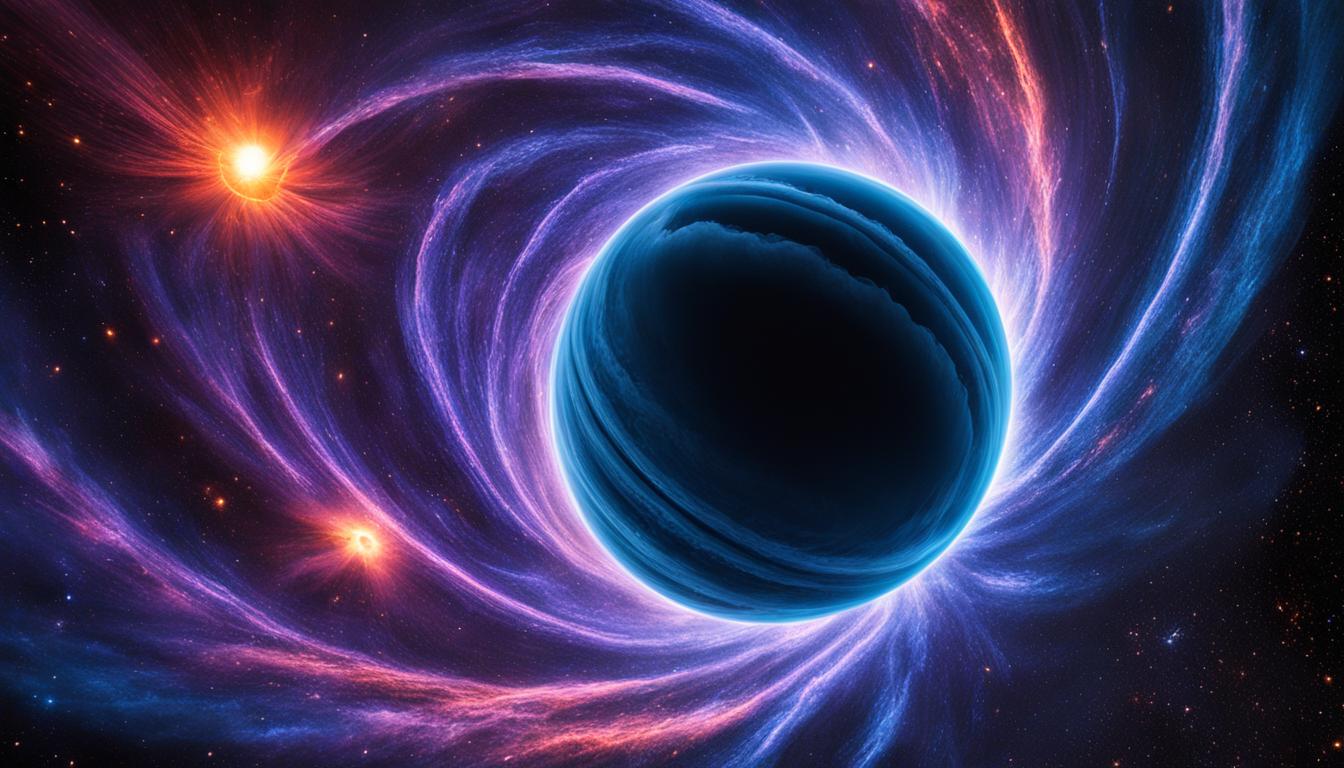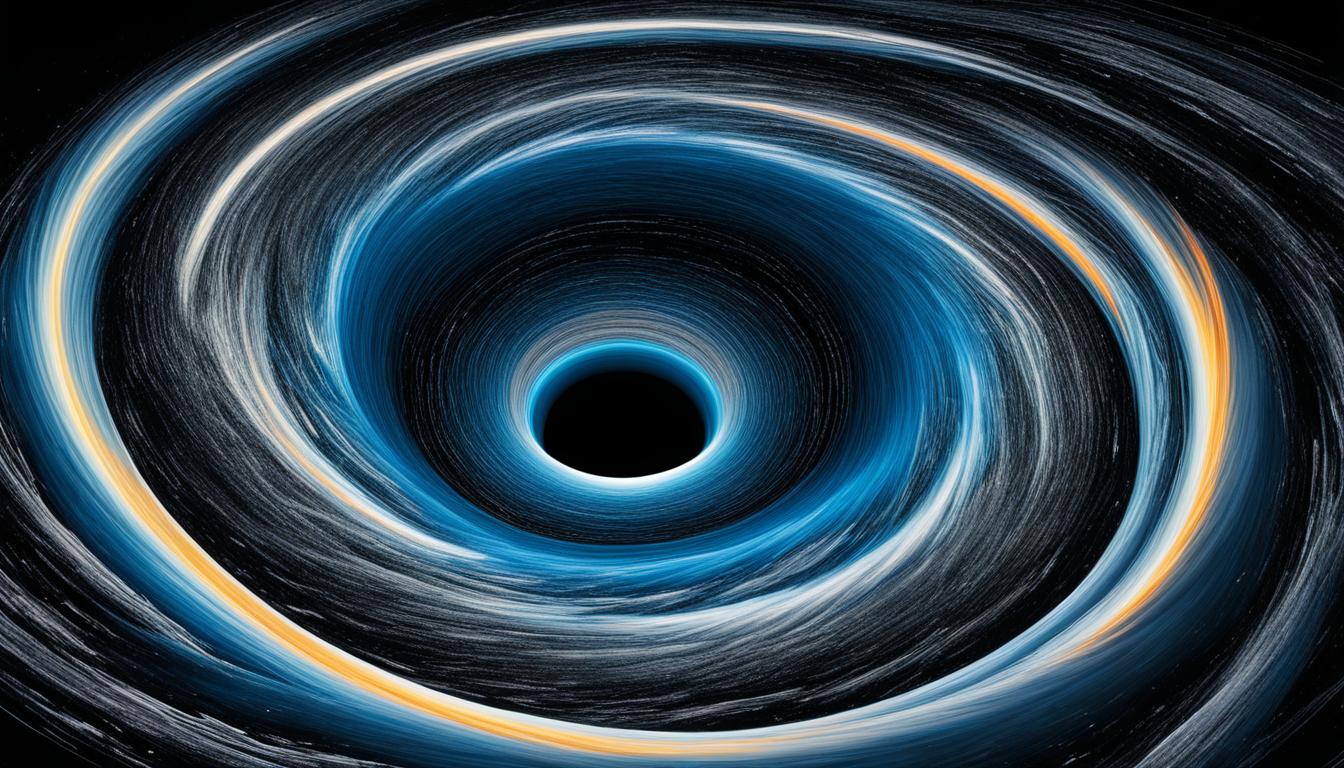Did you know the smallest black holes are as tiny as an atom but have the mass of a huge mountain? Black holes are quite extreme, and these little details make them more stunning. Scientists have been trying to figure out what makes them tick for years and what is a black hole made of. The biggest problem with black holes is that they are not observable at the same level we can observe other objects in space.
Check this out, too: What is a Star System? The Universe’s Systems
Another thing is that black holes aren’t holes at all. They are incredibly dense spots in space. Their gravity is so strong that they even pull in light. This makes studying them very hard. But we’ve made some progress in understanding them over the years since discovering black holes.

Black holes vary greatly in size, from tiny ones to huge ones at galaxy centers. They form when stars die or galaxies are born. Thanks to NASA’s advanced technology, we’re slowly uncovering the secrets of black holes, especially learning what is a black hole made of.
The Nature of Black Holes
Black holes are one of the rare things that we will probably never have an answer to about their nature. We don’t know what happens inside, we don’t know what happens around it, and we don’t know a lot of things about it, mostly because of its structure and insanely strong gravity. They have such strong gravity that nothing can escape. But we are still researching them.
The Event Horizon: The Point of No Return
At the center of a black hole is the event horizon, where gravity is too strong. This invisible line is the point of no return for anything that goes past it. For a black hole as massive as the Sun, the event horizon is only 3 kilometers wide. For objects as small as Earth, it’s just about a centimeter.

Gravity’s Extreme Influence on Black Holes
Black holes have an extreme gravitational pull that pushes our understanding of physics. Inside the event horizon, the rules of physics don’t apply anymore. This area, the singularity, is a point of infinite density. The gravity at the singularity is so strong that it warps space and time. Scientists find it hard to explain what happens there because our theories don’t go far enough.
What Is a Black Hole Made Of?

Scientists are still trying to figure out what black holes are made of. This means that we don’t know what black holes are made of. Mostly because we can’t observe them closely, let alone go near one. We can measure their mass, charge, and spin through various calculations, but what’s inside is still a secret.
Some theories say that matter that goes into a black hole doesn’t disappear. Instead, it becomes invisible to us. The center of a black hole is where quantum gravity is most powerful, where our minds and current physics understanding don’t go.
In 2019, a big breakthrough helped us understand black holes better. The Event Horizon Telescope took the first-ever picture of a black hole. This was done with telescopes from all over the world working together.
Nevertheless, black holes are important for our universe. They help shape galaxies, stars, and planets. Scientists use them to figure out the Hubble Constant, which helps us understand the universe’s size and age.
The Observable Properties of Black Holes
Black holes are mysterious objects in space with three main traits we can study: mass, charge, and spin. These features help us understand what black holes are like. The way we can do these is a different story, but how we identify black holes is via how other objects around them act. If we see objects going around an invisible black area with constant spin, we assume there might be a black hole and do further research.
Mass: The Fundamental Measure
Mass is the most important thing about black holes. Some black holes are as heavy as 10 times our Sun. Others can be much, much bigger, like supermassive black holes at the center of galaxies. The bigger the mass, the stronger the black hole.

Charge: Electrical Characteristics
Charge means how electrically charged a black hole is. Most black holes don’t have a charge. This helps scientists tell them apart, like the spinning and non-spinning types. Once you determine whether a black hole is spinning or not, it’s easier to do a deep dive into it, mostly because of how things around it behave.
Angular Momentum: Rotation in Space
Spin is how fast a black hole rotates. Many black holes spin fast. For example, the M87* black hole, which is quite famous, spins a lot at the center of galaxy Messier 87. Sagittarius A*, the supermassive black hole in the middle of the Milky Way Galaxy, is spinning extremely fast, too. In fact, it spins so fast that it warps the spacetime around it.
The Historical Journey of Black Hole Theory
Black hole theories have a long history. In 1783, John Michell, born in 1724, suggested an object so dense that light couldn’t escape its gravity. This is similar to what I mentioned above. Michell saw several objects pulled by something and circling around it when there was no visible object.
However, Michell’s idea of black holes was forgotten until the 20th century. The term “black hole” was first used in 1968 by physicist John Wheeler. This came after Albert Einstein’s gravity theory in 1916, which helped us understand black holes better.
Einstein’s General Relativity and Black Holes
Einstein’s theory of general relativity was key to advancing black hole theories. It showed that space and time change with mass and speed. Black holes form when huge stars collapse. Their size depends on their mass. For instance, a black hole as massive as Earth would be just an inch wide. Big black holes are less dense but still affect the space around them.
Observational Evidence for Black Holes
Since the 1960s, finding black holes has become a big deal. Scientists have found strong proof of these mysteries using different methods. They first found quasars, which are super bright objects. These objects shine as much as billions of stars, showing they have huge gravity.
In the 1990s, astronomers watched stars move near our galaxy’s center. This study showed a dark mass of about 4 million solar masses in a small area. This huge mass in a tiny space means there must be a supermassive black hole. That is the Sagittarius A black hole I mentioned above. That one is quite big compared to many other black holes we know.
Recently, black hole imaging has changed the game permanently. Thanks to the black hole imaging, we took the first picture. In 2019, the Event Horizon Telescope took the first picture of a black hole. This picture showed a dark center and a bright ring, just like Einstein said. When we say “taking a picture,” it’s not literally taking a picture. We combine infrared data we gather from telescopes and use the data to create the picture by using colors that we give to how cold or hot a certain region is.
Then, in 2015, scientists found gravitational waves. These waves are like ripples in space caused by black holes colliding. The LIGO observatory detected these waves, starting a new chapter in the study of black holes.
Black Holes as Windows to the Universe
Black holes give us a peek into the vastness of space. These massive objects are like cosmic labs. For over thirty years, scientists have proven black holes exist. They found stars near the Milky Way’s center orbiting a massive black hole. This discovery opened new ways to study extreme gravity.
Exploring Extreme Astrophysical Environments
Black holes’ gravity can stretch matter and bend light. These effects help us further understand stars and galaxies that are way far away from us. Because the farther a galaxy or a star is, its light and matter stretch that much. The Laser Interferometer Gravitational Wave Observatory (LIGO) detected gravitational waves from black holes. That was another extreme environment where we had to research to understand the black holes more in detail. We later started to use that in understanding other parts of the universe.
Despite years of research, black holes still puzzle us. Experts at a recent workshop discussed what happens inside them. Some think matter is lost forever, while others believe it’s recycled.
Conclusion
Black holes are the black boxes of our universe. It’s one of the rare things that we don’t know literally anything about except for their mass, size, and spin momentum. They range from tiny primordial ones to huge ones at galaxy centers. This means we don’t know what is a black hole made of, as well. That is mostly because we can’t really observe them as we observe a planet.
Despite everything, our knowledge of black holes has grown a lot since we first discovered them. They were once just theories, but now we can see them. Sagittarius A*, our galaxy’s central black hole, is as massive as 4 million suns. The M87 black hole is even bigger, with 6.5 billion suns’ mass.
There might be a time when we can finally understand them better and learn what is a black hole made of, but I don’t think that is going to happen in our lifetime.
FAQ
What is the event horizon of a black hole?
The event horizon is a boundary around a black hole. Nothing, not even light, can escape its strong gravity once it crosses this point. It marks the point of no return, where gravity traps all matter and energy.
What is a black hole made of?
Scientists debate what black holes are made of. They can measure the mass, charge, and angular momentum from the event horizon. But what’s inside is still a mystery. Some theories suggest that matter entering a black hole doesn’t get destroyed. Instead, it becomes invisible to us.
What are the observable properties of black holes?
Black holes have three main properties we can observe: mass, charge, and angular momentum. Mass tells us about the black hole’s size and gravity. The charge shows its electrical nature, and angular momentum describes how it rotates in space.
How did the concept of black holes develop?
Einstein’s theory of general relativity in 1915 first hinted at black holes. At first, many doubted the idea. However, over time, scientists like Steven Hawking and others explored black holes more deeply. They used math and physics to understand them better.
What observational evidence exists for black holes?
Over the years, we’ve found lots of evidence for black holes. The discovery of quasars in the 1960s was a big step. So was tracking stars near our galaxy’s center in the 1990s. Gravitational waves from black hole collisions found by LIGO in 2015 were another key discovery. And in 2019, we got the first picture of a black hole thanks to the Event Horizon Telescope.